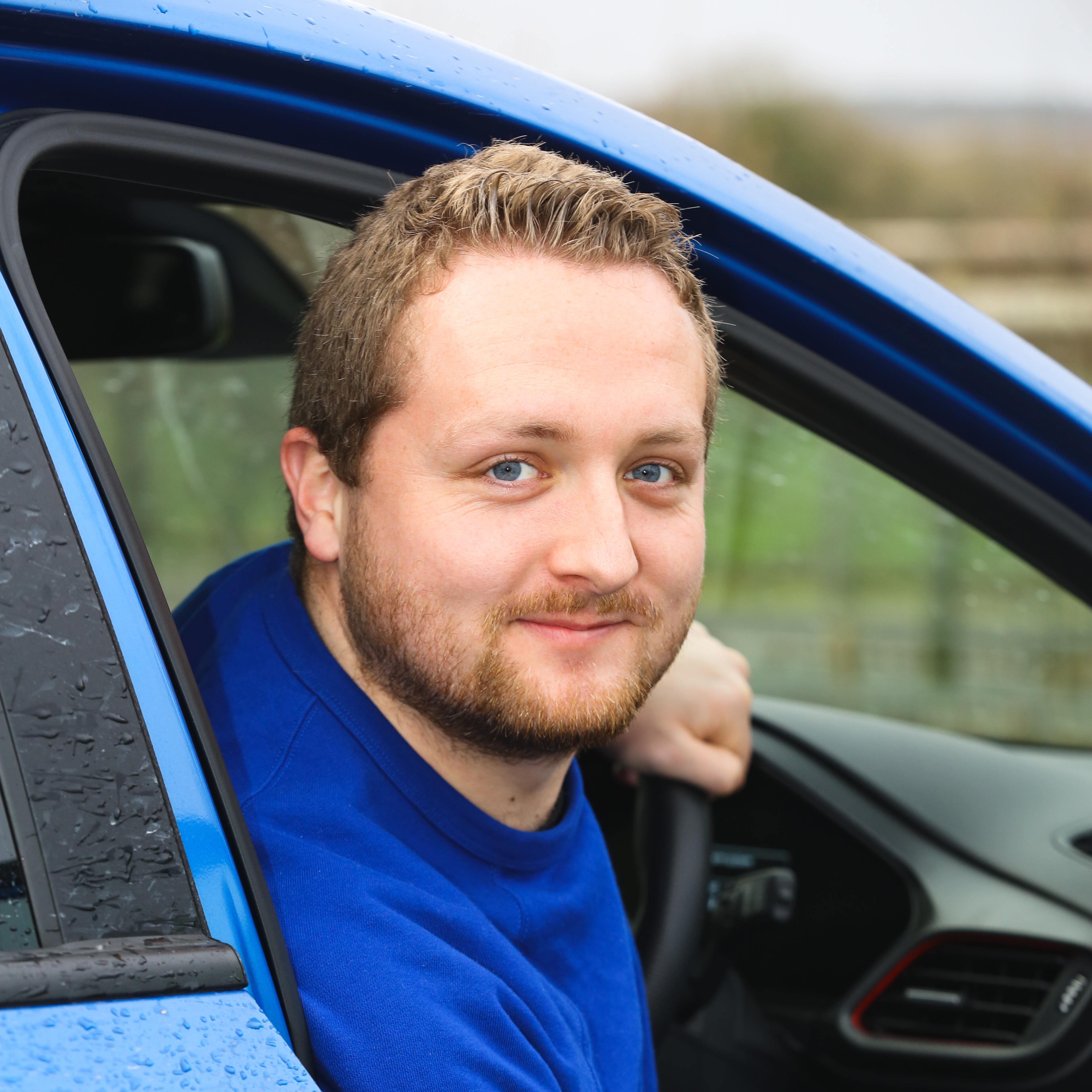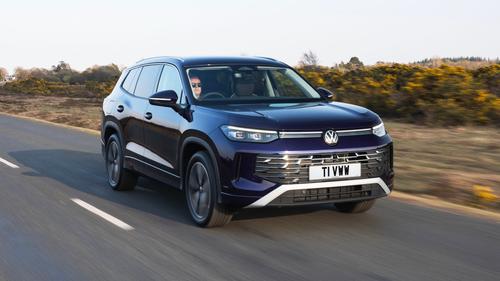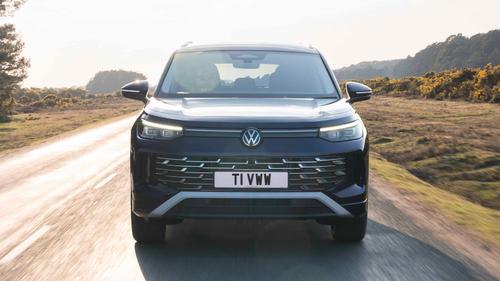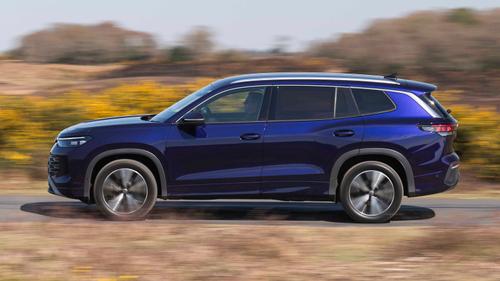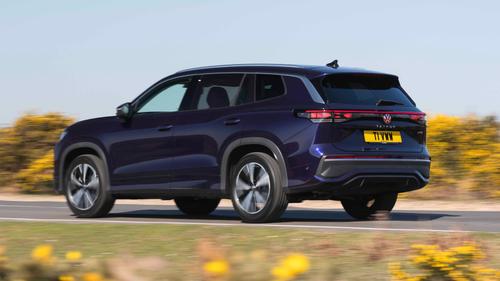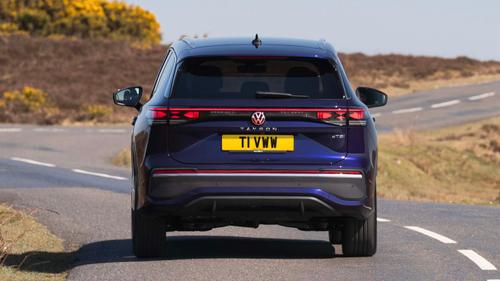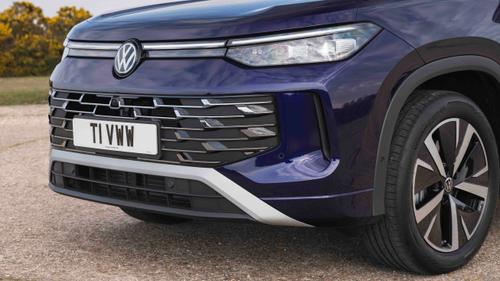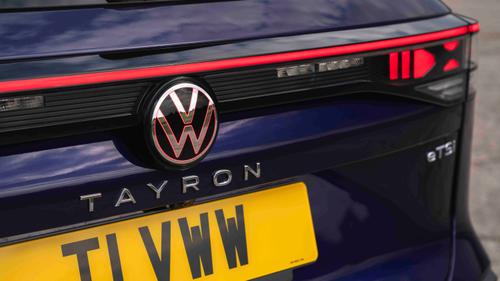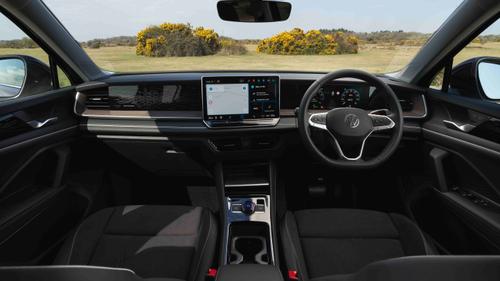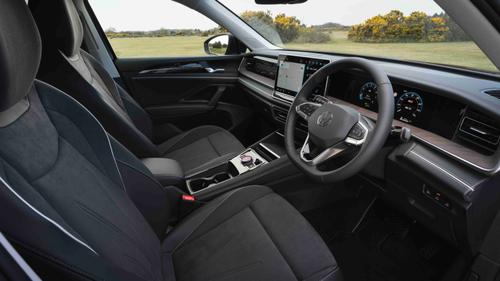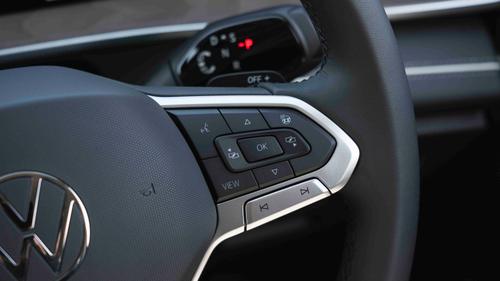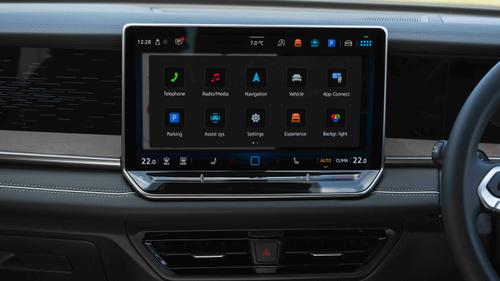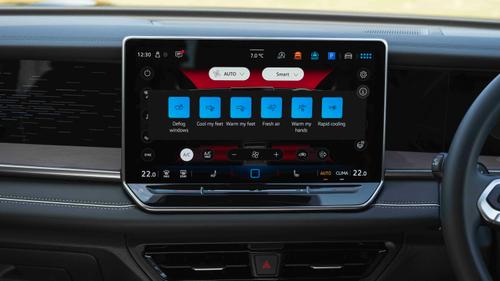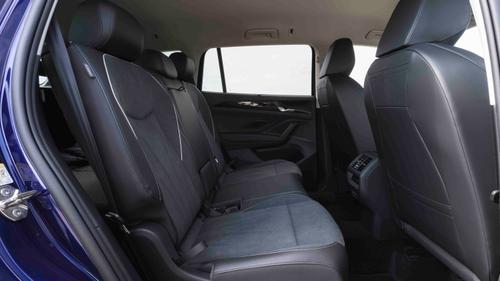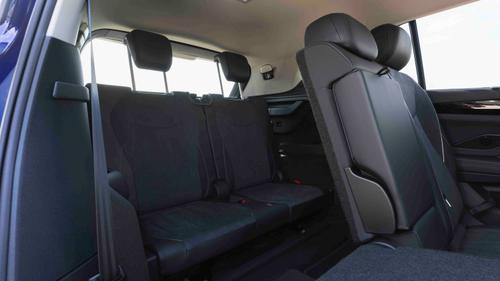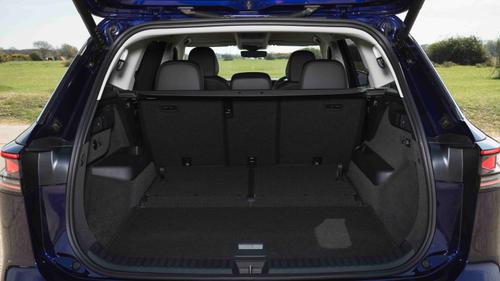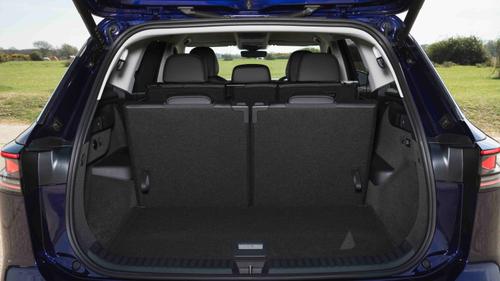
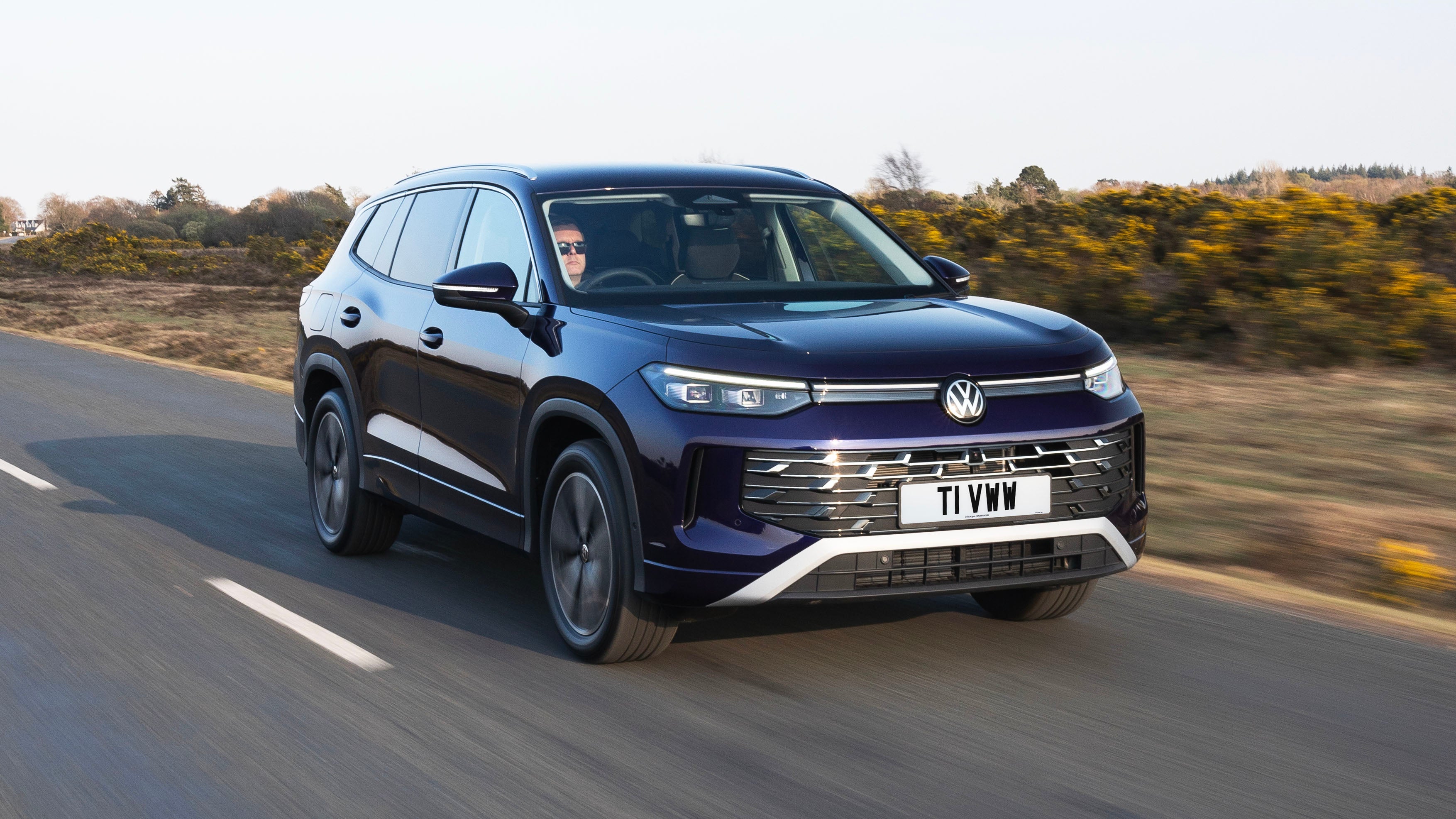

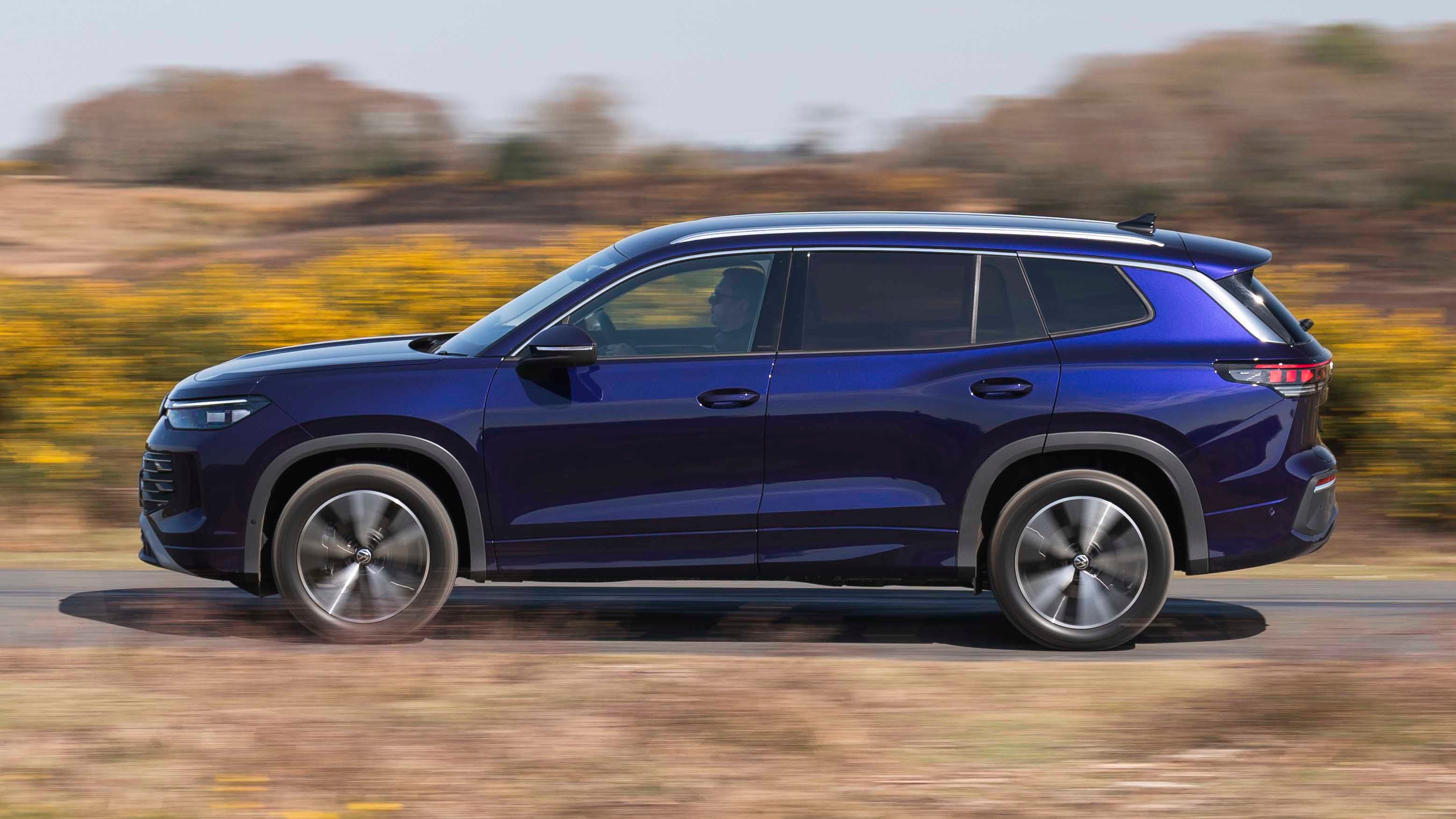
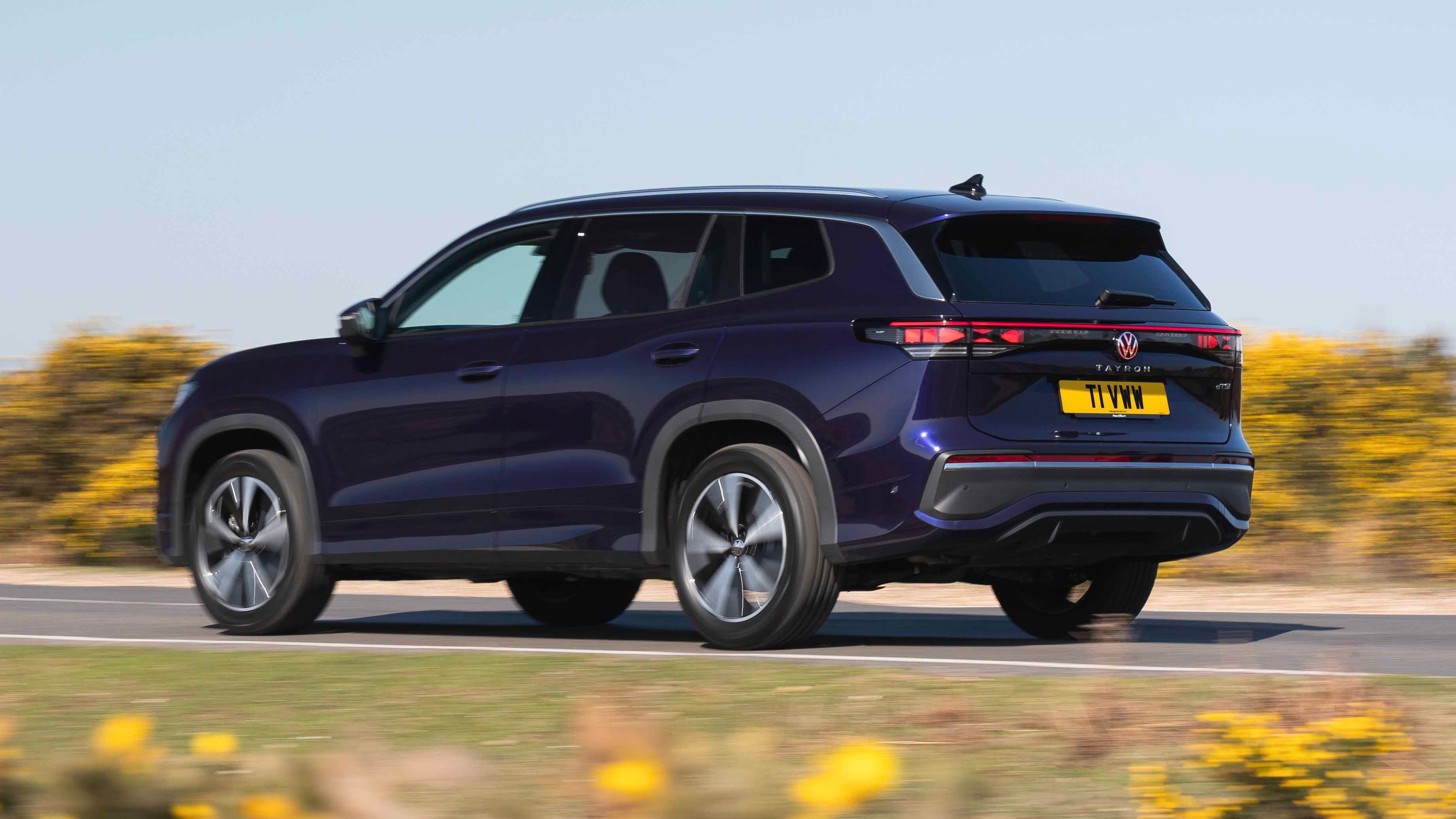
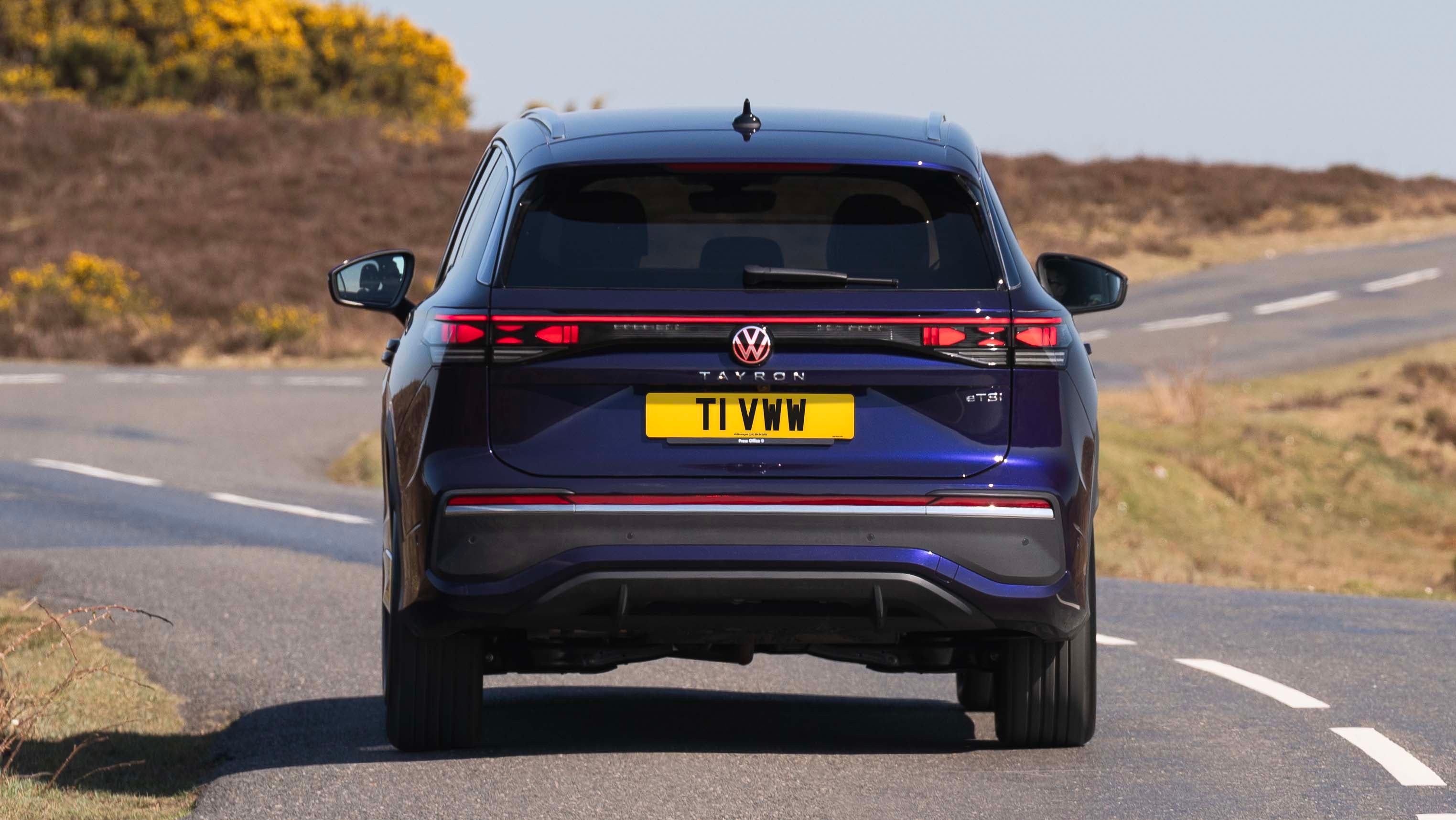

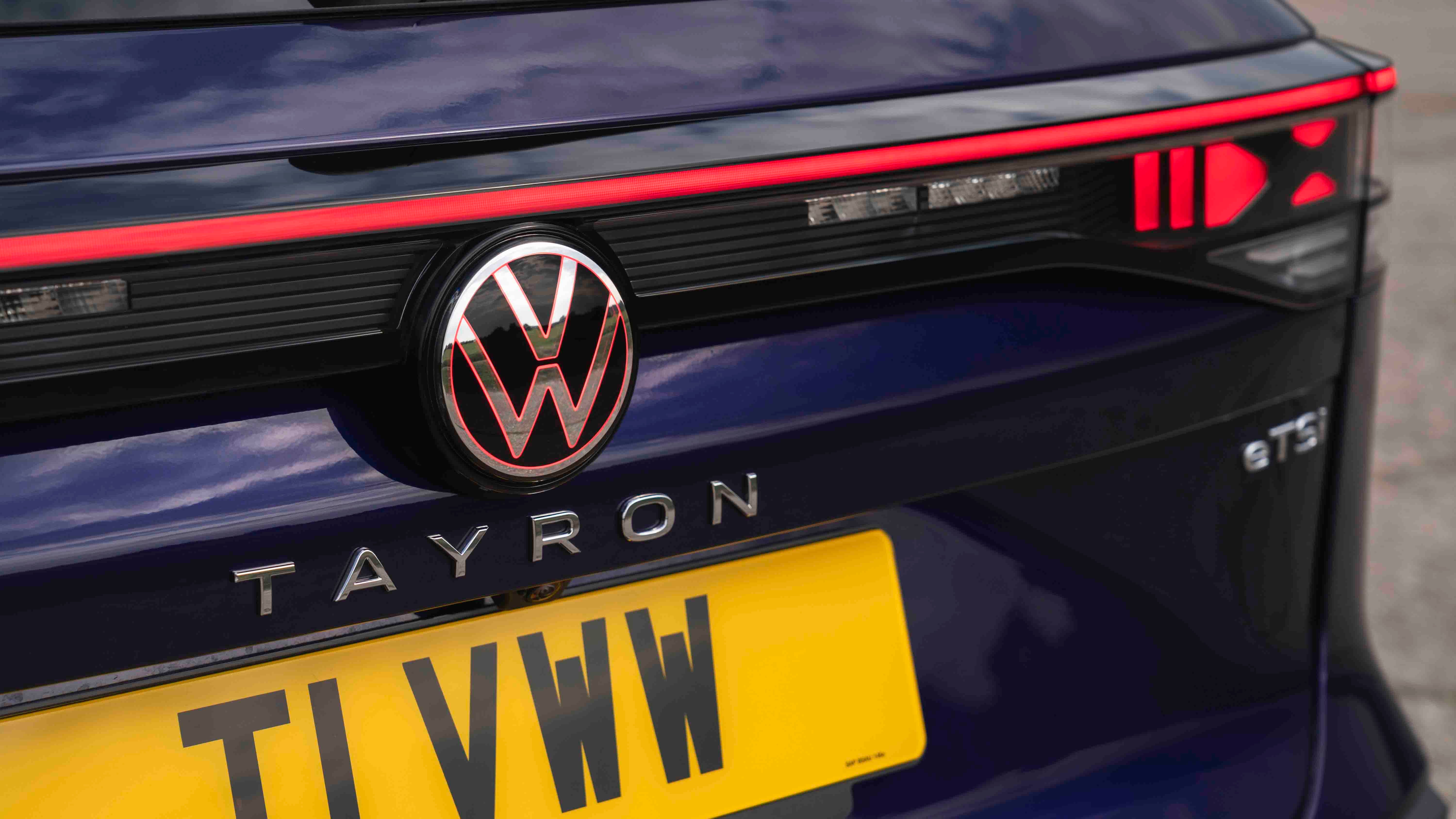
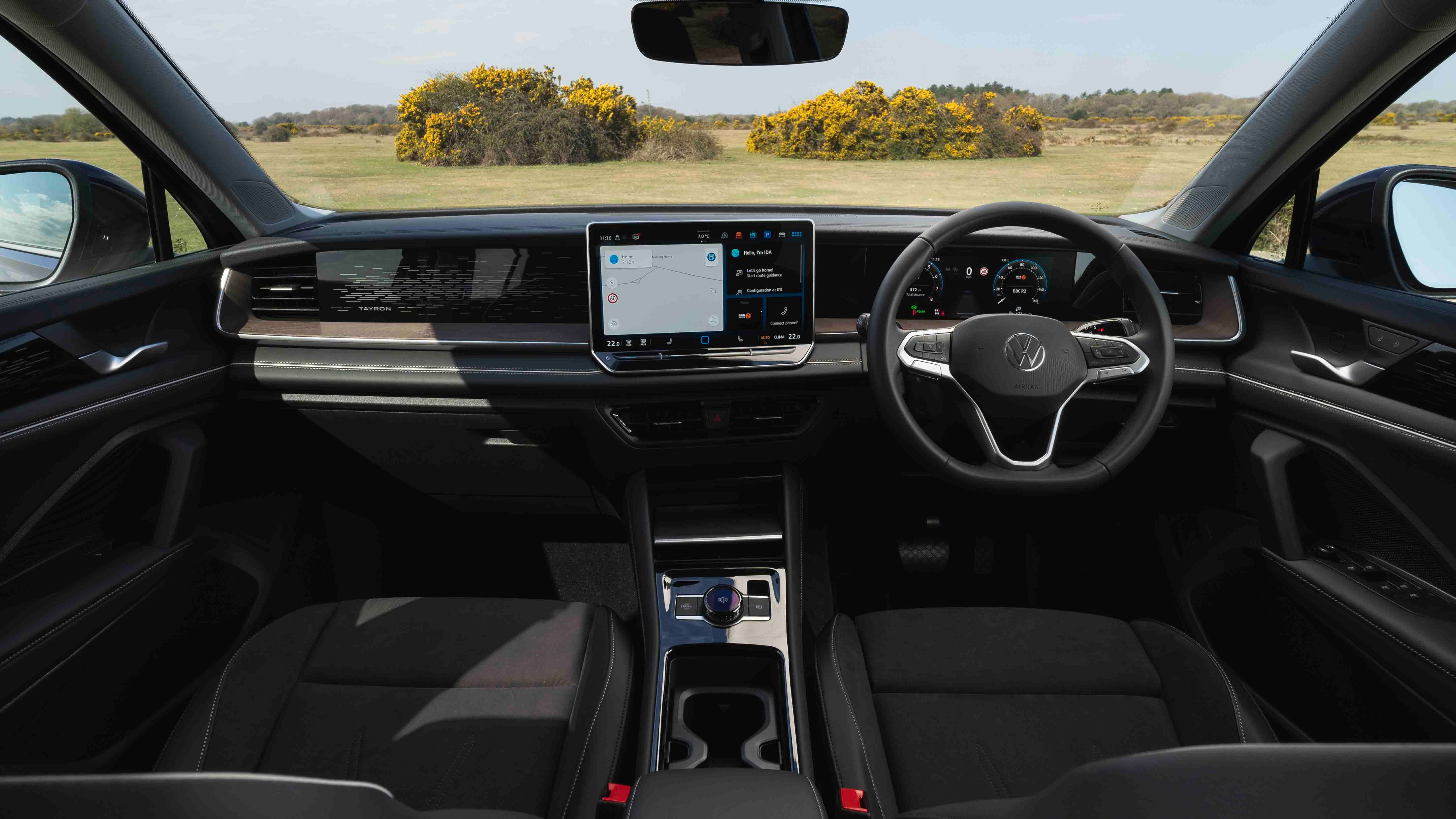

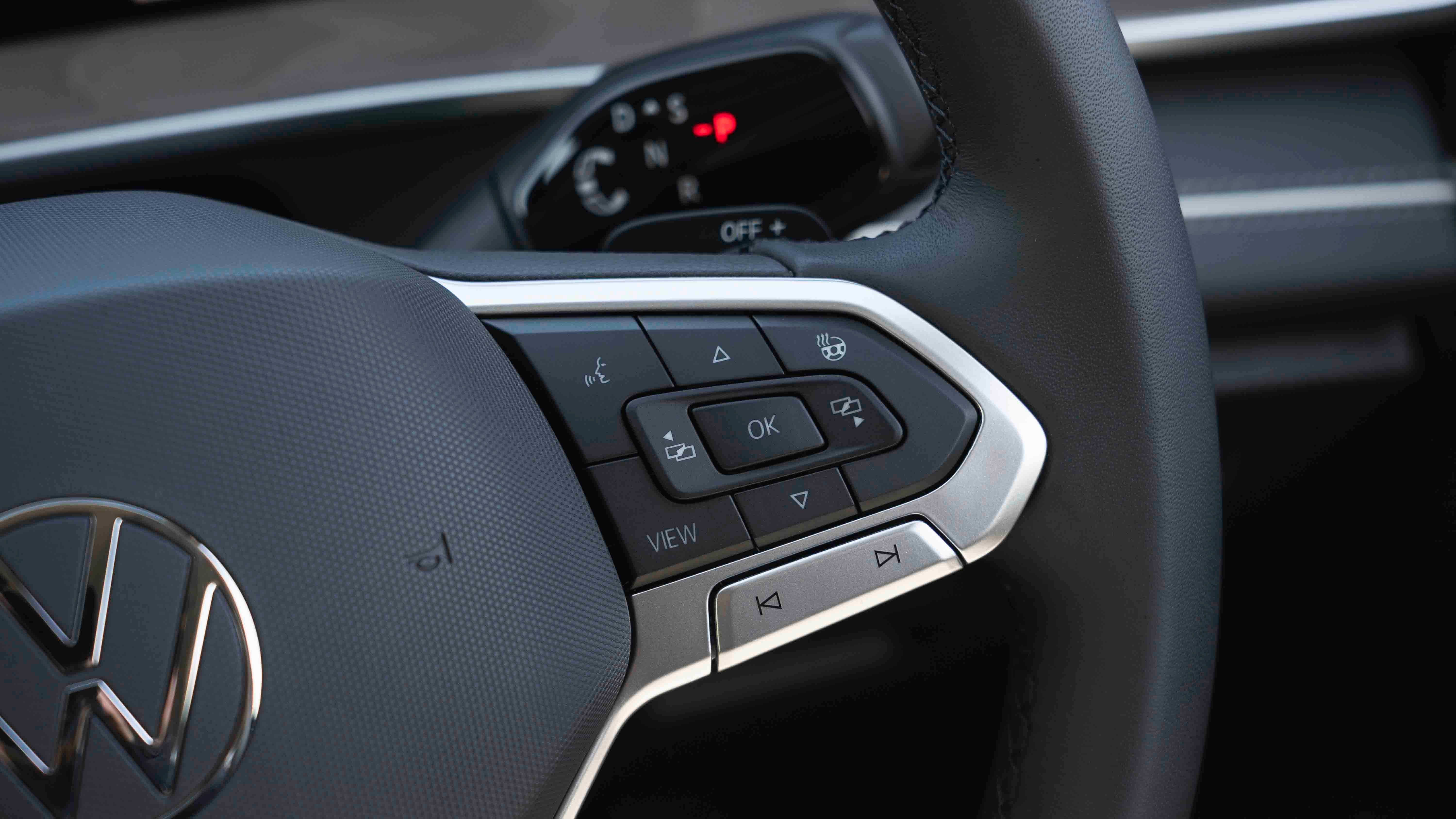


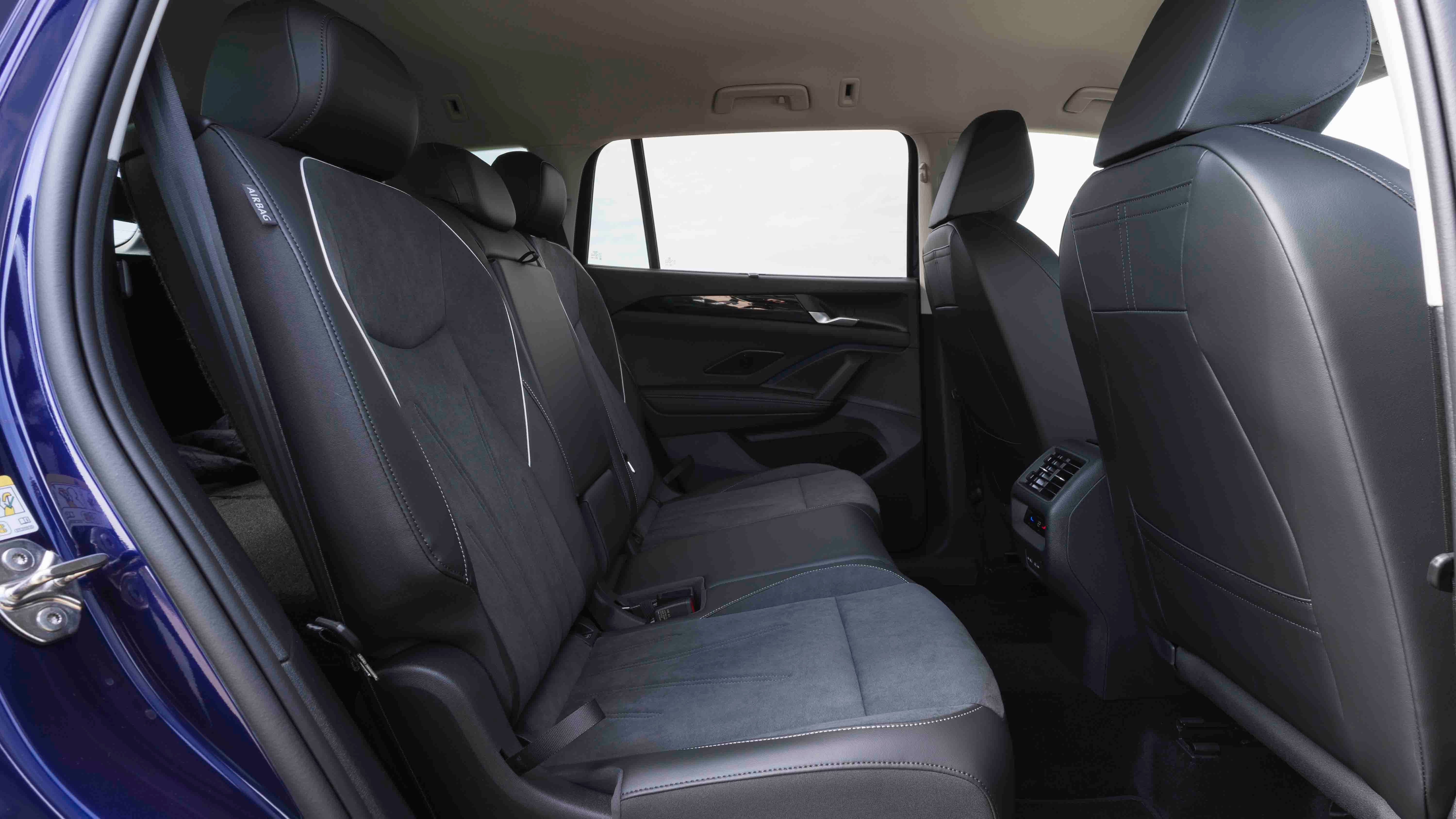


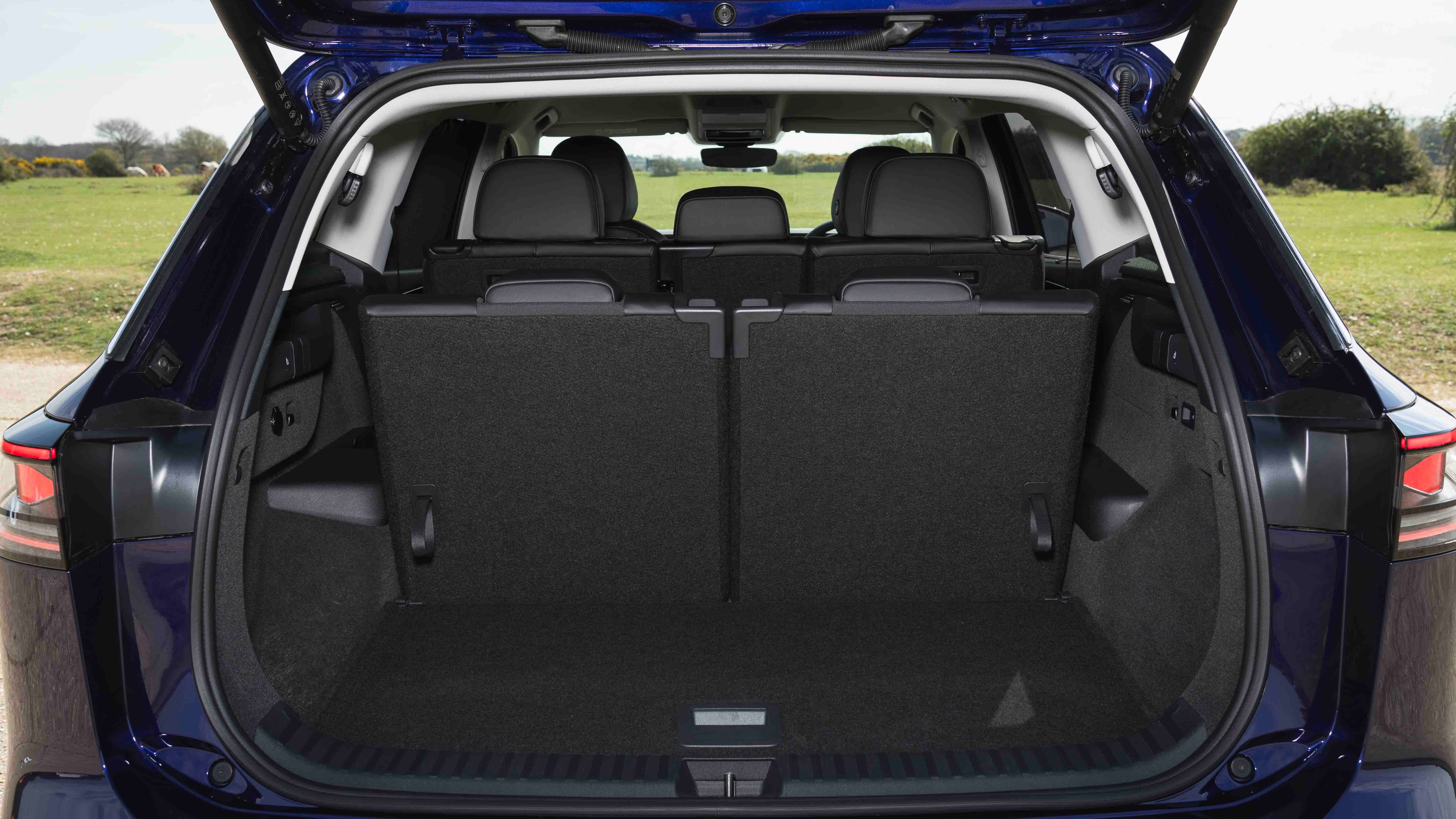
Volkswagen Tayron Review
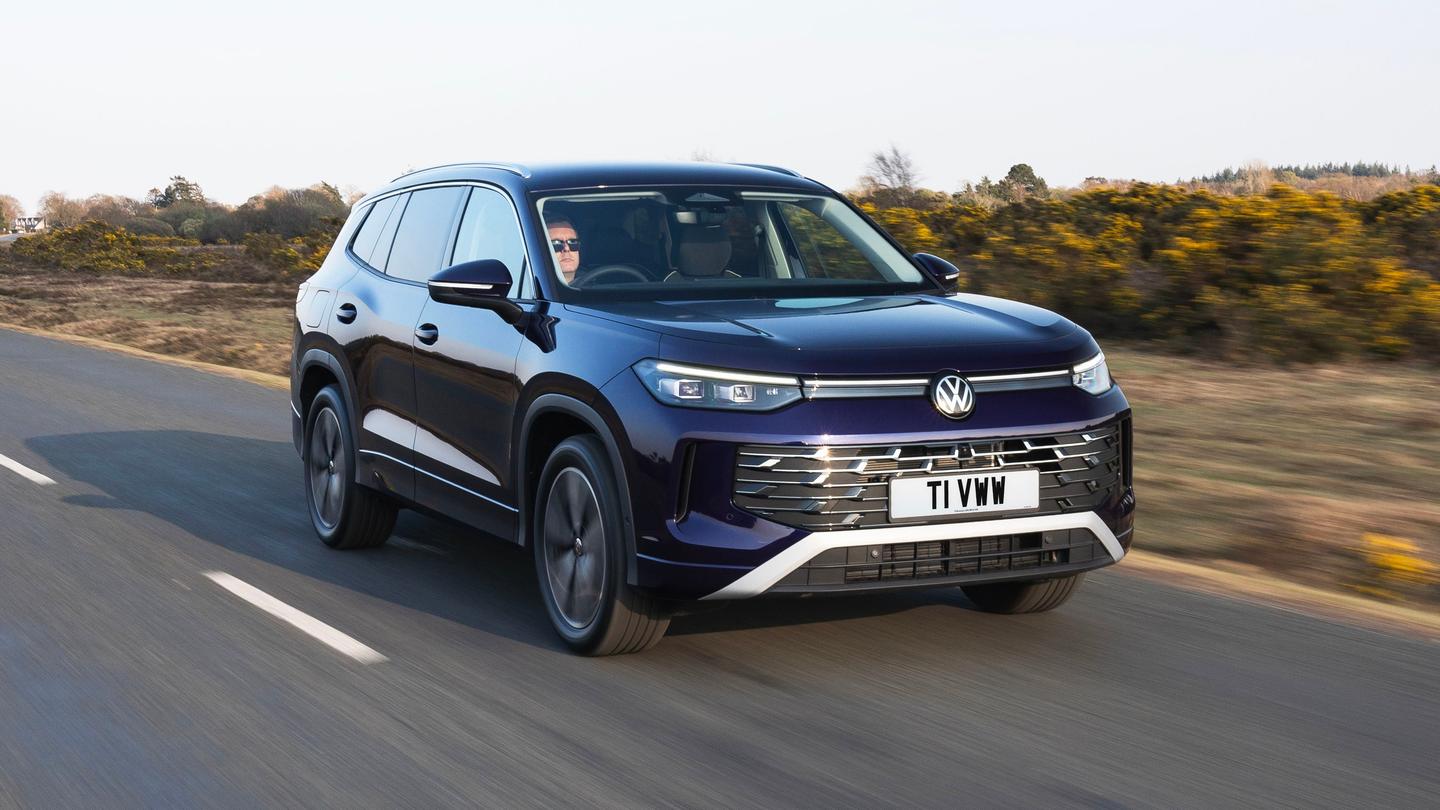
The Tayron wraps everything that’s good about the Tiguan in a more practical package.
Every version costs over £40,000, so it’s good that the entry-level model has most of the luxury equipment and seven seats.
- Comfortable
- PHEV has long range
- Great touchscreen
- PHEV only has five seats
- Third row not suitable for adults
- Growly petrol engine
Should I buy a Volkswagen Tayron?
Oh no! Not another Volkswagen SUV? As if the T-Cross, Taigo, T-Roc, Tiguan, Tiguan Allspace, Touareg, ID.4 and ID.5 weren’t enough? Fear not, because the Tayron replaces the Tiguan Allspace as a bigger, more seated Tiguan. We said it for the Allspace and we’ll say it again – it should’ve been called the 'Biguan'.
"Buy the Tayron plug-in hybrid and you’ll be able to travel up to 75 miles in electric mode – putting it right among the longest-range PHEVs"
We dare say that the Tayron (pronounced Tie-ron) has a bit more visual appeal than the Tiguan. A silver bumper insert that comes as standard makes the Tayron look more rugged than the Tiguan, and the chrome roofline trim adds some interest to what’s otherwise a pretty much rectangular box. High-spec trim levels add bigger wheels and moody black trim.
But if it’s visual appeal you want in your seven-seat family bus, you won’t take a second look at the Tayron and you’ll head for the Peugeot 5008 instead. The Peugeot is a little cheaper than the VW as a new car, too. So’s the Skoda Kodiaq, which is closely related to the Tayron, although the likes of the Hyundai Santa Fe and Mercedes GLB are considerably more expensive than the VW.
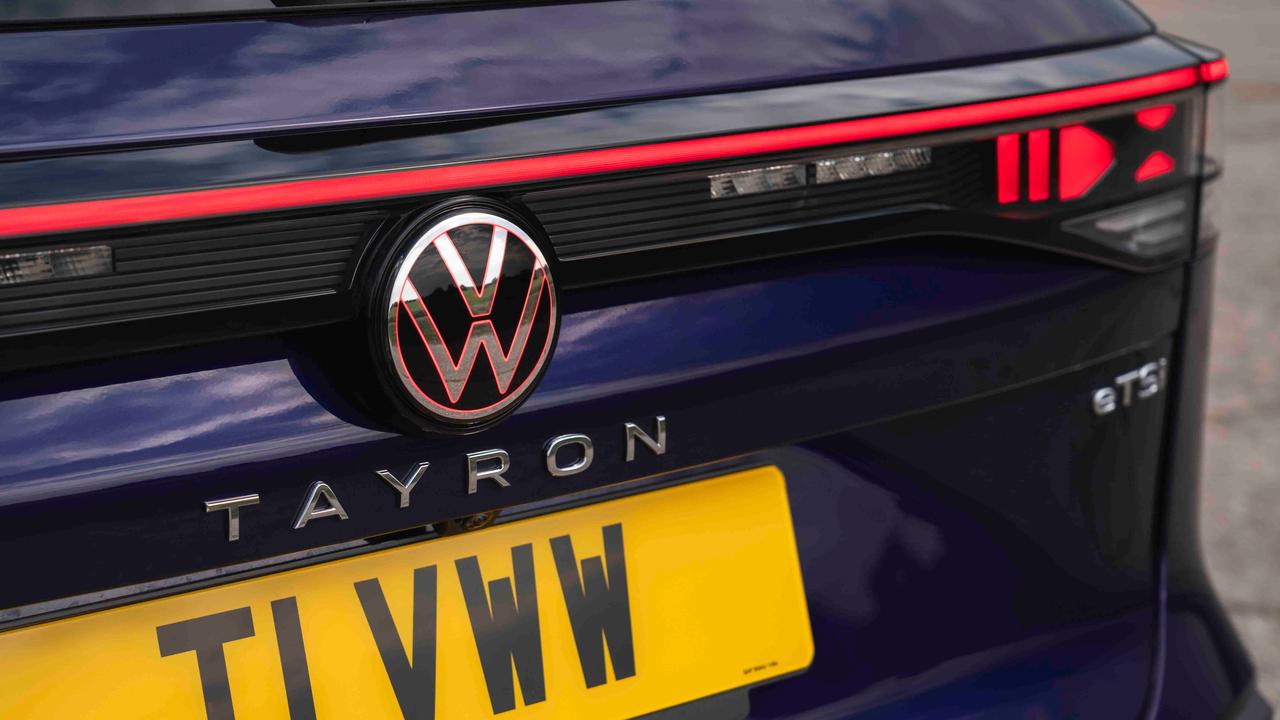
It’s a shame that VW couldn’t have made the entry-level Tayron Life trim dip under the £40,000 mark. As it is, all Tayrons are subject to a £620 yearly tax bill until they're six years old. Insurance costs are slightly higher than the Tiguan, too. The petrol and diesel engines both produce competitive fuel economy figures, while the plug-in-hybrid versions give the cheapest day-to-day running costs if you remember to keep the battery charged. But you’ll have to put up with just five seats, unlike in the Peugeot 5008 and Hyundai Santa Fe.
So, if you’re a private buyer and not a company-car driver, the Tiguan PHEV is likely to make more sense than the Tayron. And there are better seven-seaters than the Tayron, too, because the back seats aren’t big enough to fit adults in.
Interior and technology
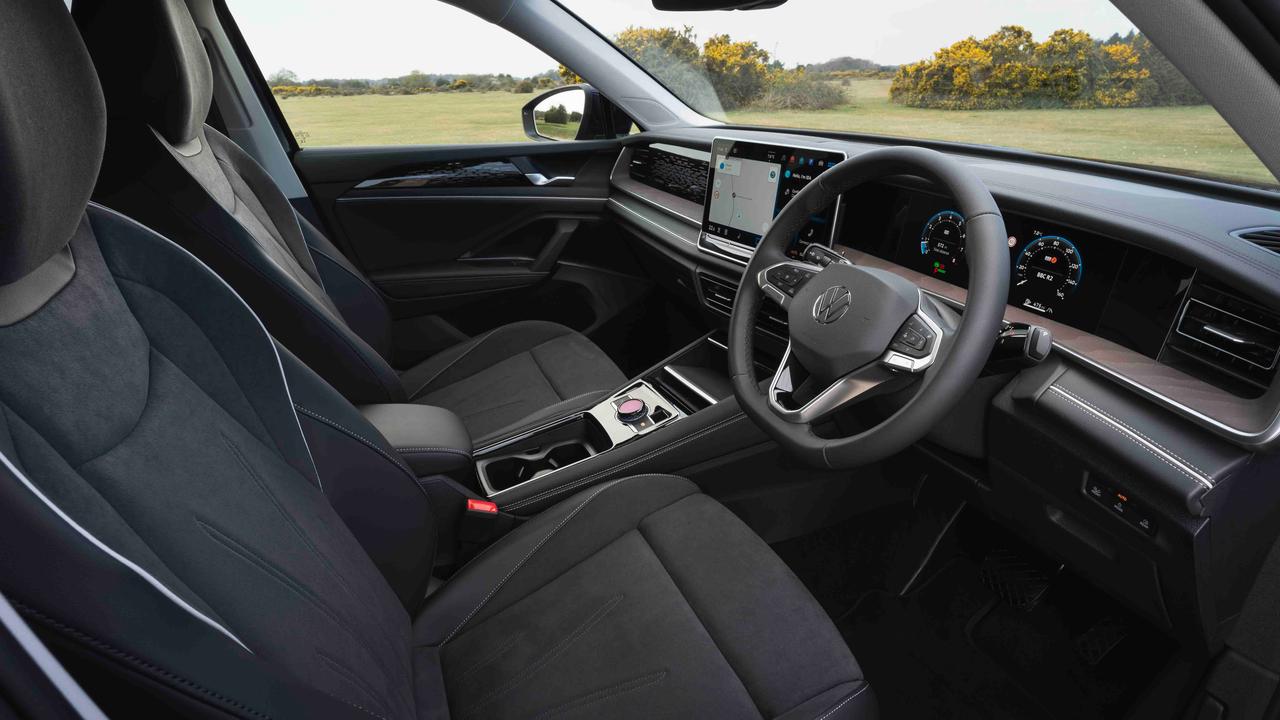
The interior is carried over from the Tiguan, which means you get a large touchscreen as standard and a good selection of plush materials throughout. Having learnt from its mistakes from the Golf, VW has given the Tayron physical steering wheel buttons and backlit climate control sliders – which are no longer quite as frustrating to use as older unlit versions.
Because the touchscreen is so large – 13 inches as standard and 15 inches optionally – the icons are large and easy to hit while you’re driving. Digital dials are also standard, and can be configured to show a map view or plenty of useful info, while a head-up display is available and useful.
Both the Elegance and R-Line cars we tried have a mix of suede-effect trim and leather, as well as an attempt at wood trim on the former. The mix of materials makes the Tayron a lovely place to sit, and build quality seems strong.
Practicality
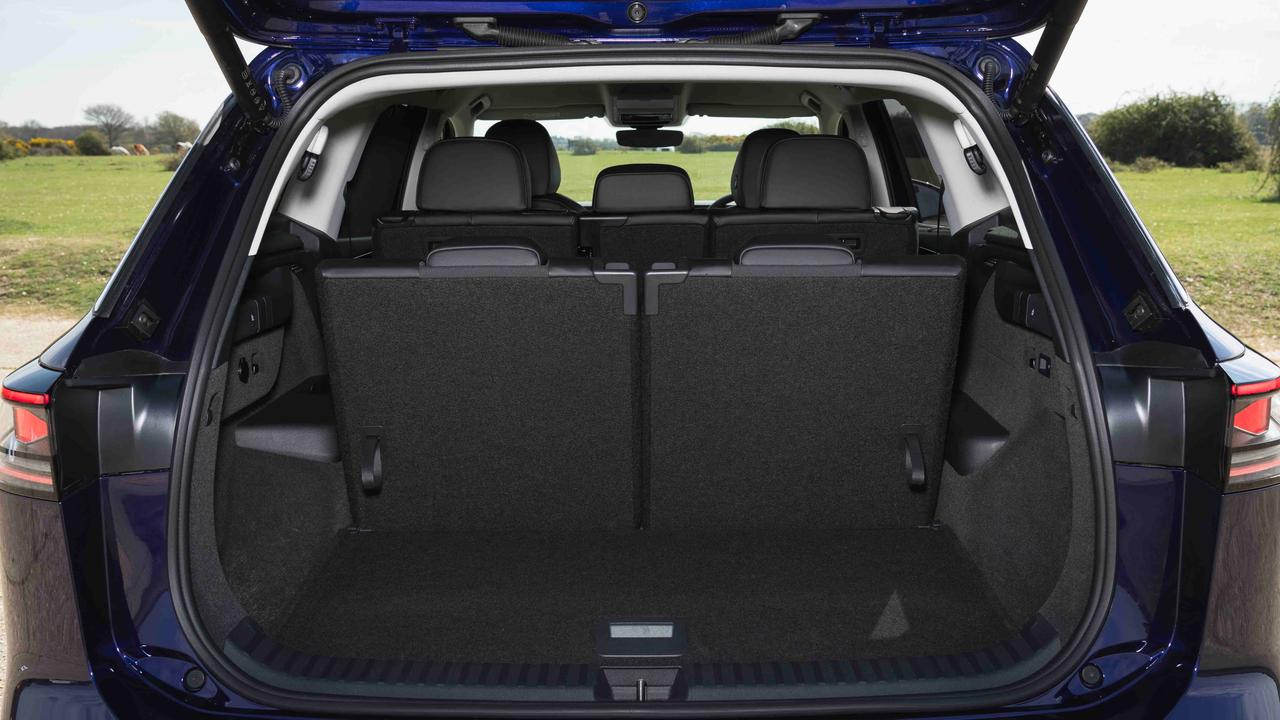
At almost 4.8 metres long, the Tayron takes up about 30cm more space on the road than the Tiguan. That should translate into plenty of extra space, but the reality is that the Tayron is far from the most spacious seven seater.
There’s plenty of space in the second row – even tall adults should be able to stretch out – but it means the third row of seats is very tight. You can’t fit an adult back there, and there aren’t any Isofix points so you’ll not want to put children in the third row. As a five-seater with a pair of extra seats for occasional short journeys, it offers a massive boot – but then the Tiguan’s not exactly short of boot space and leg room.
Engines and performance
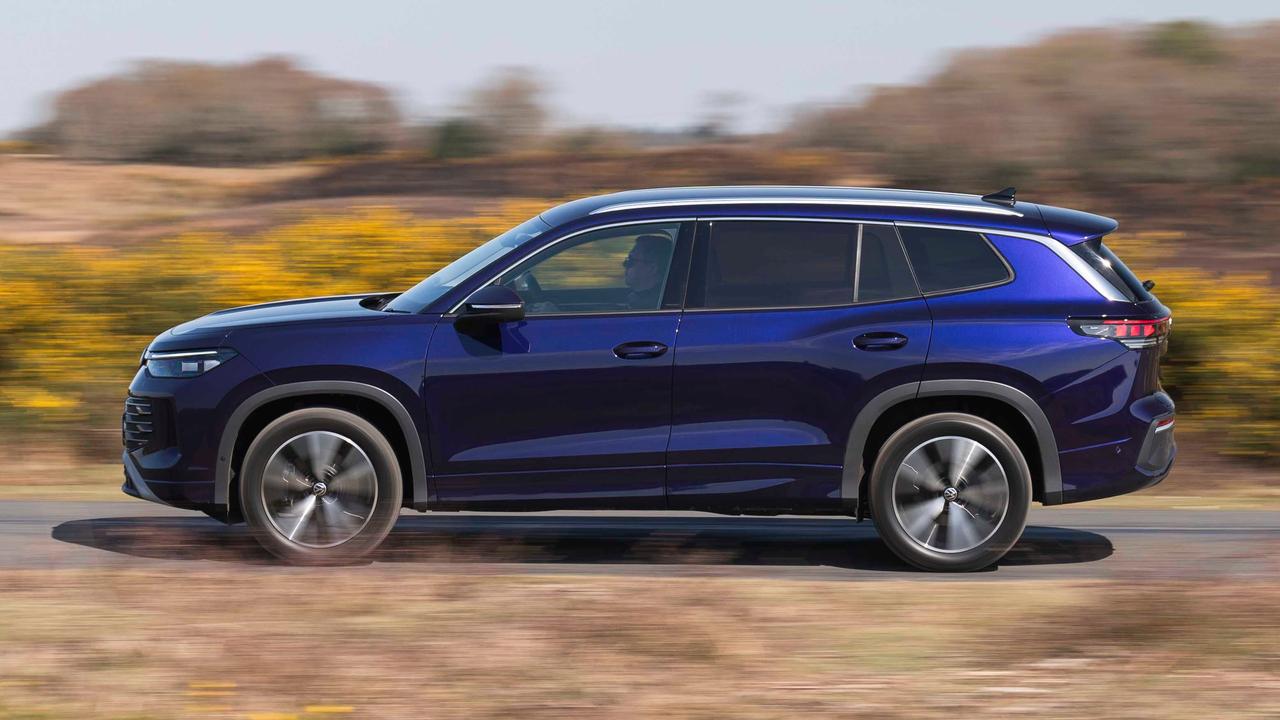
You can get the Tayron with petrol and diesel engines, both producing 150hp and both well known from many other VW Group models from the last few years. If it isn’t broke, etc. These engines are well suited to the Tayron, providing enough performance to get up to speed without a fuss while returning up to 44mpg for the petrol and 50mpg for the diesel. The petrol we tested got nowhere near VW’s estimate, though…
If you can see a point of buying the Tayron plug-in hybrid over the same-engined Tiguan, you’ll be able to travel up to 75 miles on electric mode – putting it right among the longest-range PHEVs. The quoted 696mpg fuel economy figure is largely irrelevant, as the CO2 output of just 9g/km will make this the best Tayron for company-car drivers. The Tayron PHEV is smoother than the petrol one (and the Tiguan PHEV), but it’s quite expensive.
Like the Tiguan, there’s no manual gearbox option anymore. Most cars are front-wheel drive. If you want four-wheel drive you’ll have to opt for the high-spec R-Line trim and a thirsty 2.0-litre petrol engine.
Driving and comfort
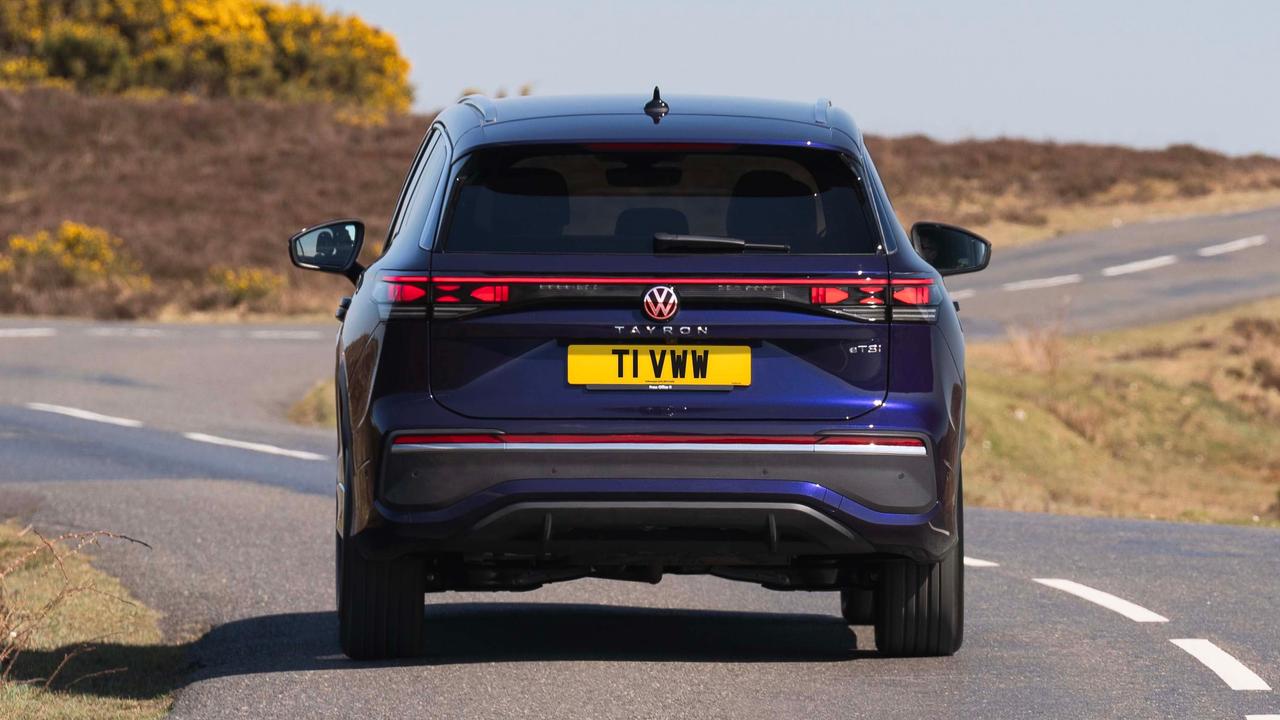
The Tayron exudes the typical VW solid feel that we’ve come to appreciate. It’s impressively comfortable over big ruts and potholes, smoothing them out at speed. The faster you go over potholes, the more impressive it is – not that we wecommend trying to hit bumps at the speed of light.
Most cars now have very light steering, so the Tayron’s heavier wheel comes as a bit of surprise. A good surprise, because the steering is well weighted and at high speeds the Tayron feels sturdy and confident. It’s not too tricky to pilot around town, either.































